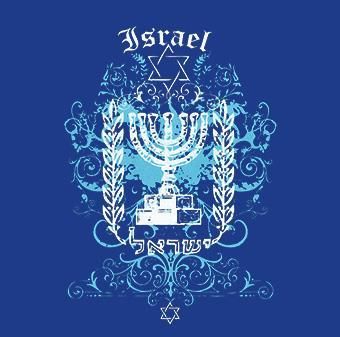
Posted on 02/24/2017 3:40:20 PM PST by Read Write Repeat
Rabbi Aaron Dovid Poston YIBONEH Midrashiah in Baka, Jerusalem (Video Length: 42m)
Ex 21:1 "And these are the judgments that you shall place before them."
Parashat Mishpatim / פרשת משפטים
Next read in the Diaspora on 25 February 2017. Parashat Mishpatim is the 18th weekly Torah portion in the annual Jewish cycle of Torah reading.
Torah Portion: Exodus 21:1 - 24:18
Next week: Parashat Terumah / פרשת תרומה
Next read in the Diaspora on 04 March 2017. Parashat Terumah is the 19th weekly Torah portion in the annual Jewish cycle of Torah reading.
Torah Portion: Exodus 25:1 - 27:19
The year after the Kli Yakar’s publication, he was appointed Chief Rabbi of the great city of Prague, where he also served as Rosh Yeshiva and the Head of the Beit Din. Rabbi Shlomo Ephraim passed away in 1619. His son and other descendents followed in his footsteps, also holding the esteemed position of Chief Rabbi of Prague. Amongst his most famous students was Rabbi Yom Tov Lipman Heller, also known as Tosfot Yom Tov.
http://www.yiboneh.com/weekly-kli-yakar-shiur-with-rabbi-poston.html
3 We have been called “people of the book” which is partially true. One book is the centerpiece of our existence. However the more true title would be “the people of the discussion about the book”. The Torah is not a reference book or an answer book. It is a teaching book. Good teaching requires class participation. When people discuss matters passionately, subtle distinctions are clarified and deep concepts are internalized. The Talmud is an all-time chat room of sorts and we are participating in a discussion with the finest minds from differing times on the most important topics. If the Torah had no Oral Torah component it would sit on the shelf, cold and remote gathering dust. Instead it is alive and stimulating discussion groups even as we speak.
See the Symphony
Posted on February 24, 2017 (5777) By Rabbi Label Lam
http://torah.org/torah-portion/dvartorah-5777-mishpatim/
Thank you for sharing, as a Christian we need to study the Torah as well. We need to stick together and rejoice in The Divine Master of the Universe. When I was growing up I had the privilege to have many lunches with a wonderful Rabbi who taught me many things... I cherish those times.
I like to learn about the Torah as well and appreciate this post and others like it.
As for me, I’ve been to a few of the open houses at the conservative and progressive houses in my neighborhood.
The Rabbis were always open to questions and I learned a lot.

I believe the Torah is the first five books of the Bible. Christians do study it.
The Talmud is the central text of Rabbinical Judaism. It has two components: the Mishnah (Hebrew: ×ž×©× ×”, c. 200 CE), a written compendium of Rabbinic Judaism’s Oral Torah, and the Gemara (c. 500 CE), an elucidation of the Mishnah and related Tannaitic writings that often ventures onto other subjects and expounds broadly on the Hebrew Bible.
Note: The Talmud is not the Bible. The Torah is.
Would someone please be willing to put the TORAH in biggish Hebrew characters in a post for me? I’ve found various variations on the net and would like an example of what folks here think is the best.
Today is the 144th of the year 5777. The world was created in 144 hours. The Sabbath was Created for man on the 145th hour. Let the Marriage begin. The Groom has prepared a house for his bride..
Thanks, knew the basics but your explanation is helpful! Thank you!
Torah is not a book. It is ‘teaching’. If the Five Books of Moses is meant, the term is ‘Chumash’ (from the Hebrew word for ‘five’), or ‘Sefer Torah’ (Book of Teaching).
Worth noting:
https://www.ouisrael.org/sedra-stats/mishpatim-stats-1033/
...MISHPATIM has 53 mitzvot; 23 positive and 30 prohibitions. Only 3 sedras have more mitzvot – Ki Teitzei (74), Emor (63), and R’ei (55).
Kedoshim follows Mishpatim with 51 mitzvot. And let’s add Shoftim with 41, since the next in line is down at 28. Mishpatim has 8.65% of the Torah’s mitzvot (1.85% is average); 48% of the mitzvot in Sh’mot.
These top 6 mitzva-sedras account for 337 of the 613 mitzvot – that’s 55% of the Torah’s mitzvot in 7% of its sedras...
I didn’t initially read it as slavery. I thought it more like a bondsman/servant/underling worker and the employer paid for the wedding, the house, the education of the offspring, etc.
Your employer gives you all these gifts/signing bonus and you take off the day after the wedding/first day of hire seems like rude behavior and abandoning a contract.
I need more study on that!
You’re on! :)
Start with Artscroll Chumash.
Or go to http://www.sefaria.org/texts and read it side by side with commentary by clicking on the dot next to each passage.
Ping me to your parsha list please. Thanks.
It is very uncomfortable to see how comfortable Jews at that time were with slavery. But it is necessary to study it and be glad we didn’t live then, or in early America when other Jews were comfortable with slavery.
I have read many hundreds of American ex slave narratives. I have come across some where the elderly person recounts things from his childhood and youth as a slave, such as: everyone had a day off on Saturday and was given extra food on that day, and how they were encouraged to worship in their way and some even learning to read. I knew damn well they had Jewish masters. Fascinating.
Shavua Tov!
Yes, it’s jam packed. Discover something new every time it’s read. Rosh Chodesh too.
You’re on the list!
Thanks!
Disclaimer: Opinions posted on Free Republic are those of the individual posters and do not necessarily represent the opinion of Free Republic or its management. All materials posted herein are protected by copyright law and the exemption for fair use of copyrighted works.